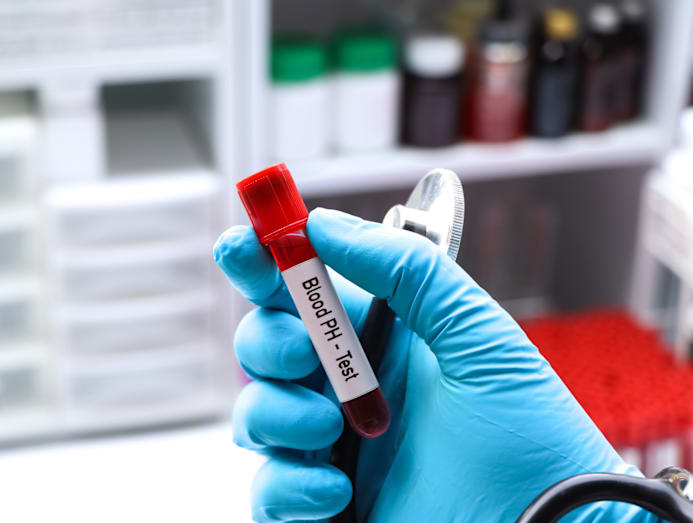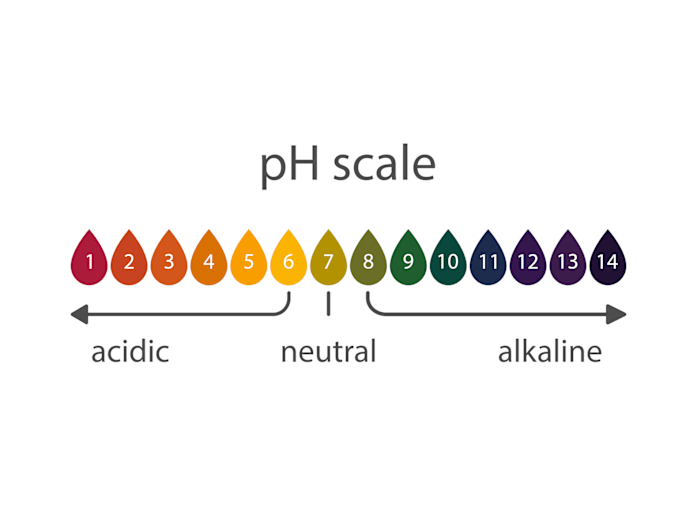There are days when you feel more tired than usual. Daily activities like commuting to work or typing out a report for your boss feel like wading through a thick sludge – laborious and sometimes, with a slow-burning headache to further remind you of your misery.
But when malaise plagues you for weeks or even months on end, and you can’t seem to pinpoint the cause, you might want to have your blood pH tested – especially if you’ve been taking a diuretic to manage your hypertension.
That was the case for a patient seen at SingHealth Polyclinics, said associate consultant Dr Patricia Chia. When the 70-year-old retired teacher began feeling unusually tired and unmotivated, he chalked it up to the effects of ageing. But that was not what his routine check-up found.
“A closer look at his blood work revealed elevated bicarbonate levels, a key marker of metabolic alkalosis, a condition where the blood becomes too alkaline,” said Dr Chia.
 (Photo: iStock/Kittisak Kaewchalun)
(Photo: iStock/Kittisak Kaewchalun)
The retiree’s blood pH had changed from the introduction of a common diuretic three months earlier to help manage his hypertension. This was in addition to his usual regimen of steroids for his eczema, which he has been on for two years without any issues.
Now, before you jump to the conclusion that we should all dump our medications, find out what is a blood pH imbalance – and what you can do to restore balance and feel better. And no, it doesn’t involve investing in an alkaline water dispenser.
WHAT IS YOUR BLOOD’S NORMAL PH ANYWAY?
Your blood’s usual pH is slightly alkaline and falls narrowly between 7.35 and 7.45, according to Dr Chia. “This range stays consistent throughout the body and does not change in relation to your body part, gender, or time of the day.”
In fact, it is important that your body keeps your blood pH within this range because the slightest deviation “can affect how our cells work and may lead to serious health issues if not corrected”, she said.
Your blood pH is not to be confused with the pH of your body parts. “For example, the stomach is very acidic to help with digestion, while the vagina is slightly acidic to protect against harmful bacteria. These differences are normal and necessary for each organ to do its job effectively, but they do not reflect or affect the pH of the blood,” said Dr Chia.
 (Photo: iStock/Yulia Bliznyakova)
(Photo: iStock/Yulia Bliznyakova)
HOW DOES YOUR BODY MAINTAIN ITS BLOOD PH BALANCE?
To prevent any change to the blood pH, you have your stomach, lungs and kidneys to thank. “The very acidic stomach acid will neutralise any alkaline substance you ingest before it even gets to your bloodstream,” explained Dr Jasmin Koh, a general practitioner with Doctor Anywhere.
“The kidneys also play a major role in filtering and balancing the pH of anything you consume,” she added. Depending on your body’s needs, your kidneys can excrete acid or alkali (such as bicarbonate) into your urine, or they can reabsorb them into your bloodstream, she said.
Your lungs, too, are another major pH regulator. “Your body produces carbon dioxide as a waste product, and in the blood, carbon dioxide can become an acid,” said Dr Koh.
You may not notice it but “when your blood becomes a little too acidic, your brain will instruct your lungs to breathe faster and deeper to ‘blow off’ more carbon dioxide”, she said. “This reduces the acid in your blood and brings the pH back up.”
ARE THERE DIFFERENT TYPES OF BLOOD PH IMBALANCE? WHAT ARE THE SIGNS?
There are two main types of blood pH imbalances: Acidosis (too acidic) and alkalosis (too alkaline). Each category is further segmented into:
ACIDOSIS
- Lactic acidosis: When intense exercise causes muscles to produce too much lactic acid.
- Diabetic ketoacidosis: A complication of Type 1 or Type 2 diabetes when there’s insulin resistance or insufficiency, and the body breaks down fat for energy instead. The resulting ketones are what acidifies the blood.
- Renal tubular acidosis: When the kidneys fail to secrete acid, resulting in an increase in blood acid level.
- Hyperchloremic acidosis: Typically caused by severe diarrhoea when the bicarbonate level in your blood becomes too low.
- Respiratory acidosis: Your lungs can’t expel enough carbon dioxide due to chronic lung diseases such as asthma or sleep apnoea. The buildup of carbon dioxide then lowers the blood’s pH.
 (Photo: iStock/twinsterphoto)
(Photo: iStock/twinsterphoto)
ALKALOSIS
- Metabolic alkalosis: Usually a result of surplus bicarbonate in the blood caused by severe vomiting, dehydration or the use of diuretics.
- Respiratory alkalosis: Carbon dioxide dissolves in blood to form carbonic acid. But when its level drops due to rapid exhalations during hyperventilation (caused by anxiety, fever or high-altitude exposure), it can increase blood’s pH.
“The signs of a blood pH imbalance are often non-specific and can overlap with many other conditions. This is why a proper diagnosis by a doctor is crucial,” said Dr Koh.
“For acidosis, the symptoms can include feeling very tired and lethargic, confusion, rapid breathing, or a headache,” said Dr Koh. “For alkalosis, you might experience muscle twitching or spasms, lightheadedness, numbness or tingling in the hands or face, or a feeling of being very agitated.”
She emphasised that for either acidosis or alkalosis to cause symptoms, the condition has to be “pretty severe”.
WHAT ELSE CAN CAUSE A BLOOD PH IMBALANCE?
For the retiree patient, it was his diuretic medication. “Diuretics are very commonly used for lowering high blood pressure or to remove excess fluid from the body, especially in conditions like heart failure or kidney problems,” said Dr Chia. “They work by helping the body get rid of extra water and salt through urine.”
However, diuretics also remove hydrogen ions, which can cause the blood to become too alkaline, leading to metabolic alkalosis, she explained.
“In most people, their bodies can adjust and restore the pH balance on their own. But in some cases, especially if the diuretic dose is high, the body’s natural balancing systems may struggle to keep up. When that happens, metabolic alkalosis can develop,” said Dr Chia.
 (Photo: iStock/Shidlovski)
(Photo: iStock/Shidlovski)
What are your odds of developing a blood pH imbalance if you don’t have a chronic condition or on any medication? It is still possible, though less common, said Dr Koh. For instance, very strenuous exercise can cause temporary mild acidosis as the muscles produce lactic acid, she said.
Reiterating the abovementioned examples, other real-life situations can include severe food poisoning, and in pregnant women, extreme and persistent nausea and vomiting, cited Dr Chia. In these scenarios, losing large amounts of fluids and stomach acid can lead to dehydration and disrupt the delicate balance of pH in the blood, she said.
“Severe respiratory distress, such as from an asthma attack, can also lead to acidosis,” added Dr Koh. “These are usually acute and self-correcting once the underlying cause is resolved.”
High altitude sickness is another possible trigger, said Dr Chia. This can happen when you ascend to high altitudes without allowing your body time to adjust. “The sudden drop in oxygen levels can affect breathing patterns, which may in turn, alter the body’s pH levels,” she said.
CAN A BLOOD PH IMBALANCE BE DANGEROUS IF IGNORED?
In acidosis, said Dr Koh, it “can affect the central nervous system, leading to stupor or even a coma”. Not only that, acidosis can also cause potential complications such as “heart rhythm abnormalities, which can be dangerous and may affect how well the heart pumps blood”, added Dr Chia.
 (Photo: iStock/andreswd)
(Photo: iStock/andreswd)
Your bone health may suffer, too. To correct acidosis, your body will pull minerals such as calcium from the bones, explained Dr Chia. As a result, you may end up with fragile bones over time. That’s not all the trouble the mineral leaching can cause. “Salt and mineral imbalances can lead to cramps, confusion, or even seizures,” she said.
Conversely, if you have alkalosis, “it can lead to seizures and muscle spasms”, said Dr Koh. “Both acidosis and alkalosis, if severe and left untreated, can be life-threatening as they disrupt the function of multiple organ systems,” she warned.
WHAT TEST AND TREATMENT ARE USUALLY USED?
Typically, a blood test known as an arterial blood gas or ABG is used. “This test gives a precise measurement of the blood pH, and the levels of oxygen and carbon dioxide in the blood,” said Dr Koh.
Dr Chia pointed out that even without the availability of an ABG, as is the case in most primary care clinics, “a comprehensive patient history, physical examination, and a basic renal panel including bicarbonate levels are often enough to raise suspicion”.
As for the treatment, it depends on the cause of the imbalance. “For example, if it's due to dehydration from diarrhoea, treating the diarrhoea would be the mainstay of treatment,” explained Dr Koh. “If it's a complication of an underlying condition like kidney failure, treating or managing that condition is key.”
 (Photo: iStock/Cat Lane)
(Photo: iStock/Cat Lane)
If it’s medication-related, as in the elderly patient’s case, doctors may switch to a different medicine or adjust the dosage to avoid upsetting the blood pH.
“The time it takes to see an effect from treatment varies widely,” said Dr Koh. “A severe imbalance can be stabilised in a matter of hours in the hospital, while a chronic, less severe issue might require ongoing management over a longer period.”
CAN DRINKING ALKALINE WATER OR ADOPTING AN ALKALINE DIET HELP TO RESTORE THE PH BALANCE?
In short, no. “While it seems logical that alkaline water or food would affect blood pH, it's not how our body works,” said Dr Koh. “The pH of your blood is extremely stable as we discussed earlier.”
And “while some water dispensers claim to ‘alkalise’ water, the change in pH is usually very small and not strong enough to affect your body’s pH level in the digestive system”, said Dr Chia.
“Even if you drink alkaline water, your body will adjust it as needed once it reaches the stomach, so that proper digestion can continue”, said Dr Chia. “This is part of the amazing way the human body works to ensure that we remain in a well balance condition, no matter what we eat or drink.”


















































